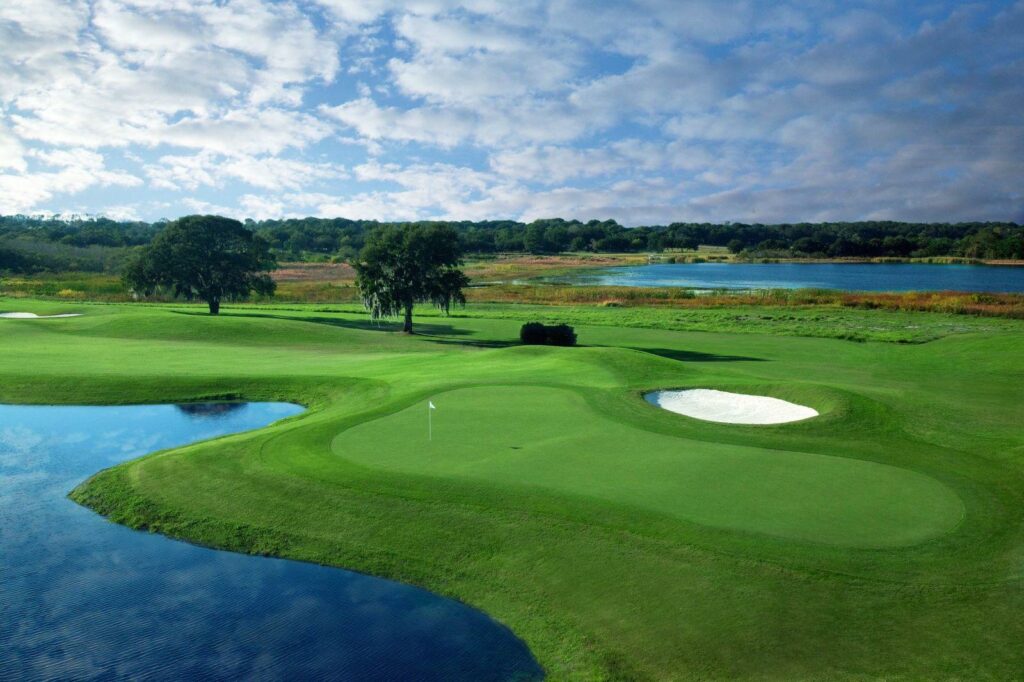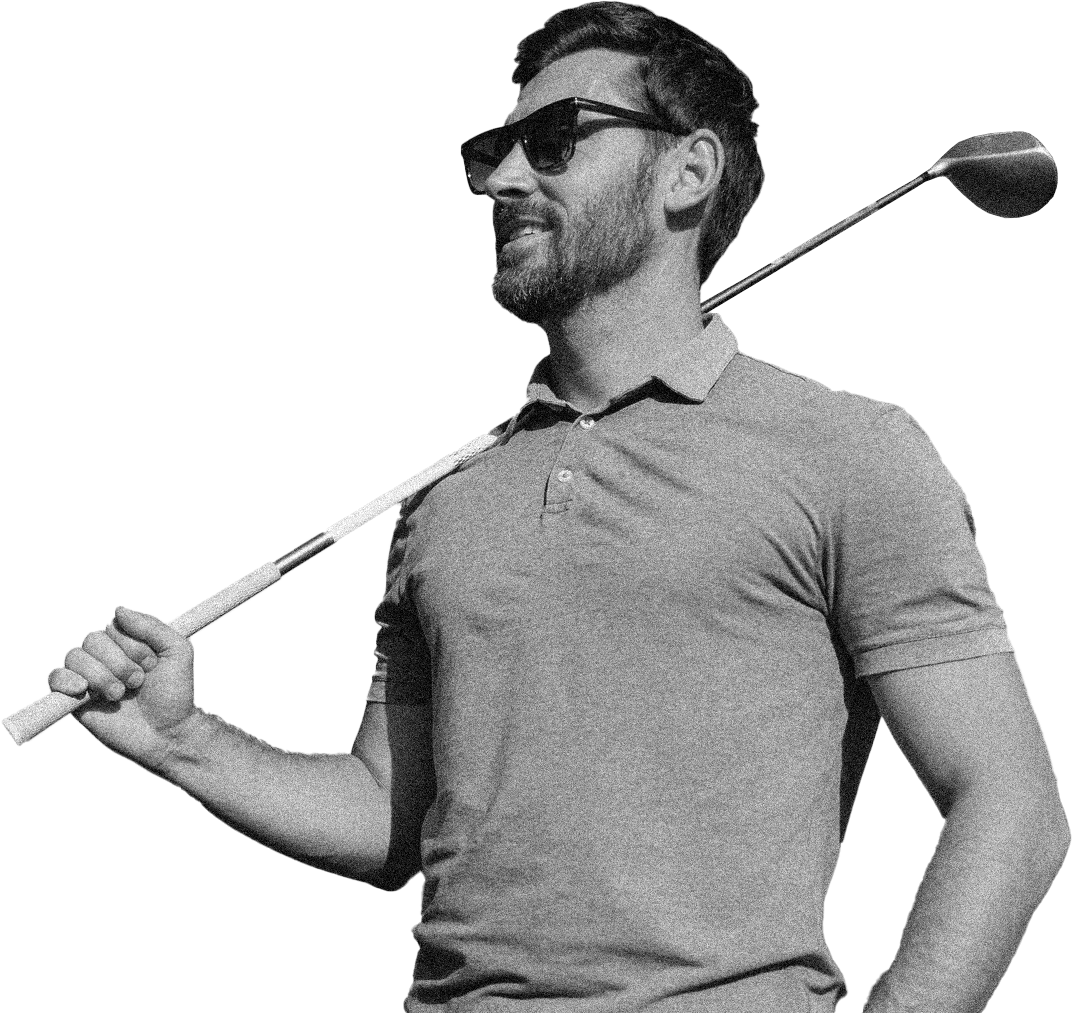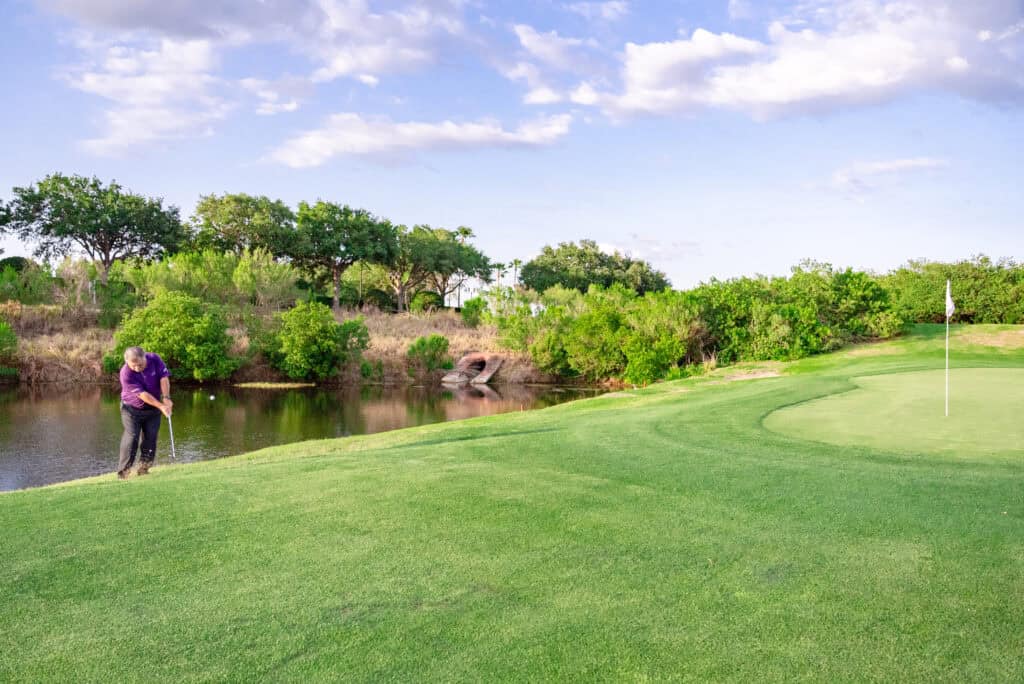The third shot on par 4’s is the most pivotal shot! Not the drive, not even your approach shot. But your third shot. One of the reasons why I am considered one of the best golf coaches in Florida is because I provide all my clients with the type of coaching that makes a difference to their game and score. Like being cognizant of why your third shot on any golf hole is the most critical shot. And it is why John Hughes Golf stays busy helping golfers of all skill levels play to their potential. And to reach their potential, they must all come to grips with their third shot on par 4’s being the most critical shot.
It’s the Silent But Deadly Game Changer
Think about it. You’re either putting for birdie, saving par, or doing some type of damage control to insure a big number does not register on your scorecard. Your third shot on a Par 4 hole makes the difference between you scoring well or poorly. Whether you’ll have confidence going forward or not. Your third shot on a par 4 is where your round can either recover or unravel.
Let’s take a deep dive into why the third shot on a par 4 demands more of your attention. And why you must respect and practice these shots more often.
Why the Third Shot on Par 4’s Matter More Than You Think
The third shot on par 4’s comes in many shapes, sizes, and distances. Not to mention lies and environmental conditions. Your ability to make sound decisions about how to execute your third shot on a par 4 is critical to your success. We’ve posted many times about how to make great decisions, so we’ll bypass that within this post. But worth mentioning in this post is the decision you made with your second shot. It was the one which set up the third shot on par 4’s.
It is likely that your 2nd shot was poorly thought out, ultimately forcing you into a negative third shot on par 4’s situation. We’ll cover that more within that category below. But we always are hoping for your benefit that not only was your 2nd shot decision a sound one, but you also executed the shot well to create a positive opportunity for your third shot on par 4’s.
Let’s examine the positive first. Then provide you with ideas and tips to save par because of a negative 2nd shot.
The Positives – Birdie Time
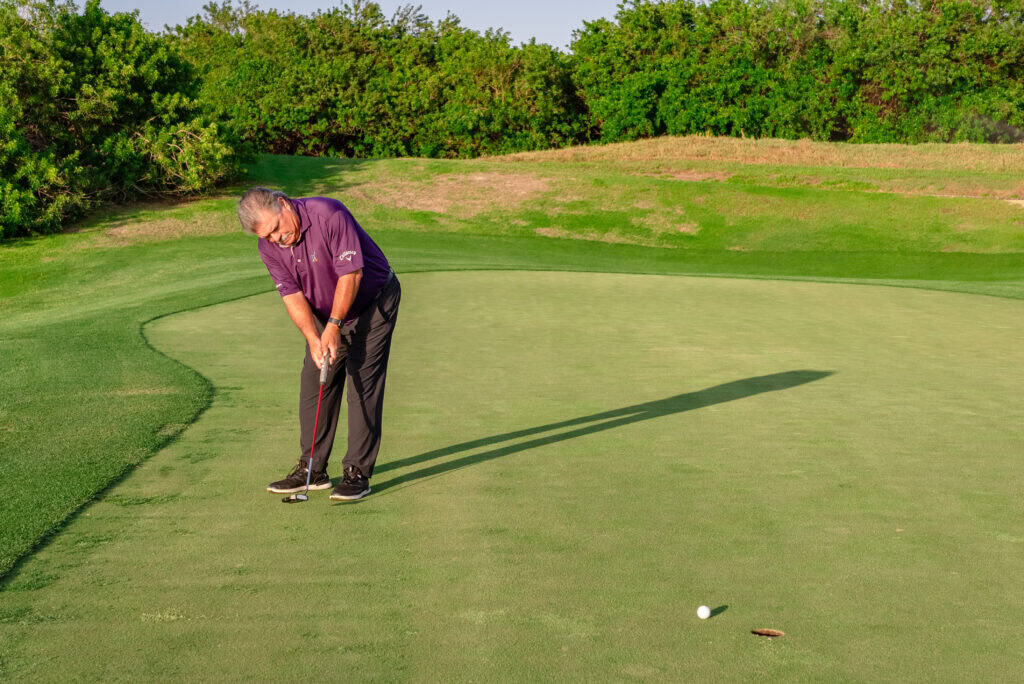
Let’s start with the positives. If you’ve executed properly each decision you made, your third shot on par 4’s will hopefully be you putting for birdie. Experiencing and enjoying an opportunity to lower your score anywhere on the course is what we all are attempting to accomplish. But birdies do not come easily. And the opportunities are fewer and can sometimes have a lot of holes in between each opportunity.
Because there are few birdies opportunities in any given round of golf, you must make the most of every opportunity. Which is why we’ll spend some time examining how you can convert more birdies with your third shot on par 4’s.
First Putt Distance Average
The PGA Tour keeps detailed statistics of a lot of items amateur golfers can’t wrap their arms around. But on statistic all golfers need to know to reach their potential is what is the average length first putt you have when you hit a green in regulation? For our purposes this month, that average length first putt is our birdie opportunity.
The average first putt length on the PGA Tour is 28 feet when a green is hit in regulation. This average was computed from 2 statistics. The PGA Tour’s average length of putt when a green is hit in regulation and only 1 putt is needed. As well as the average first putt length when a green is hit and the player 3 putts is 28 feet. Keeping this length in mind, you’ll always see touring professionals working on their putting distance control from that length, as well as graduated lengths in shorter and longer than the average. Why?
Because being able to control the distance you hit your putts is paramount to you converting more birdie opportunities. If you knew your average fist putt distance and could practice that distance more often, don’t you think you’d convert more of those putts?
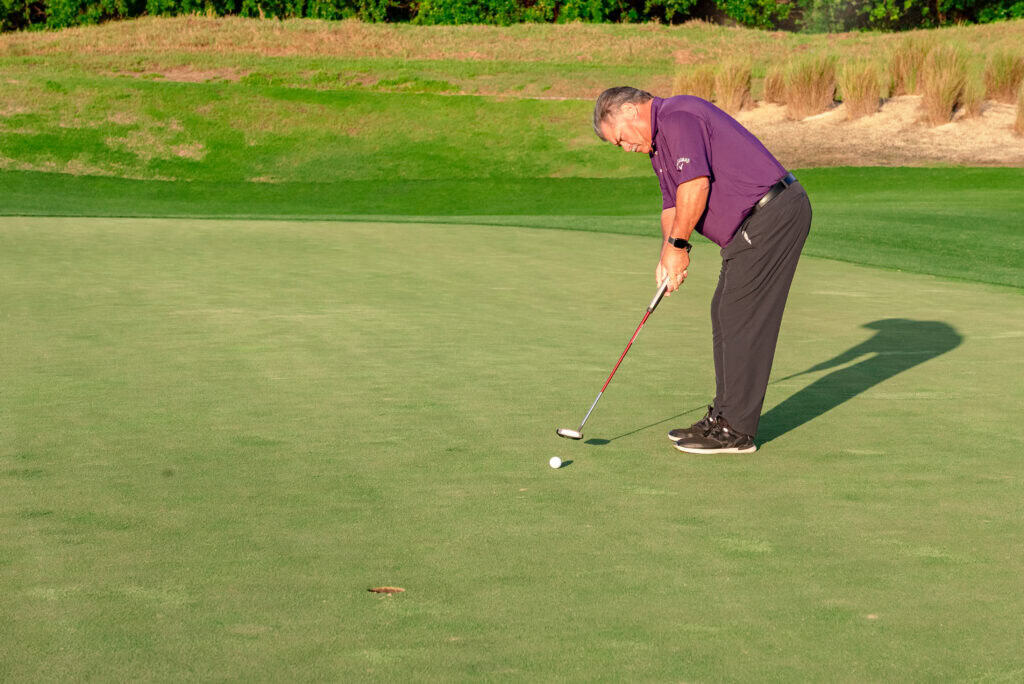
To do so, a commonly used drill is the ladder drill. Place a tee in the green at your first putt average distance. Now space out 2 more tees in front of and behind that tee. Increments of 3 to 5 feet are ideal. Now, one at a time, hit a putt from each distance. Attempting to make each one. But keeping your misses within 1 foot of the cup, preferably past the cup. After all, you can’t make a putt unless it gets to the hole.
Do this same drill with uphill, downhill, and curving putts from each direction. Always attempting to make the put and if you miss, the ball remaining within 1 foot of the hole. With curving putts in either direction, be sure if you miss and go by the hole, you’re missing on the high side of the hole.
To make more birdies at the average amateur level, taking a page from the pros to make you a better putter provides you with an opportunity to make your third shot on par 4’s that much more enjoyable and convertible.
The Negatives – Damage Control and Recovery
Golf isn’t played perfectly. It’s played smartly. If your tee shot found trouble (deep rough, fairway bunker, trees) or your approach came up short, your third shot is your lifeline. It’s your opportunity to get back into scoring position to avoid a double bogey. As well as regaining momentum for the balance of your round.
Turning Mistakes Into Pars
Say you’ve hit a poor approach and now you’re 30 yards short of the green. This third shot, if executed well, can save your par. It’s the shot that determines whether you’ll walk away with frustration, or a small fist pump.
Your Third Shot on Par 4’s is a Momentum Builder
A great up-and-down on a par 4 after a bad drive or mis-hit second shot does more than save your scorecard—it boosts your confidence. That kind of momentum can carry you through the next few holes, especially on a tough track.
Short Game = Scoring Game
The third shot on par 4’s is almost always a short game shot—chip, pitch, bunker shot, or a putt from just off the green. And guess what? The short game is where strokes are truly won or lost. Your third shot is your chance to show your finesse.
Real-World Examples of Crucial Third Shots on Par 4’s
Let’s look at the most common types of third shots you’ll face on a par 4 and how to play them:
The Pitch from 40-60 Yards
Scenario: Your drive missed the fairway, and your punch-out left you with 50 yards in.
Shot: Low-spinning, controlled pitch.
Technique: Use your lob or sand wedge. Focus on controlling the landing spot, not the overall distance. Keep a steady tempo and avoid deceleration.
Why It Matters: These “in-between” yardages are often mishit. Dial this in, and you’ll be giving yourself inside-10-foot par saves all day.
Greenside Bunker Shot
Scenario: Your approach missed the green and plugged into the front bunker.
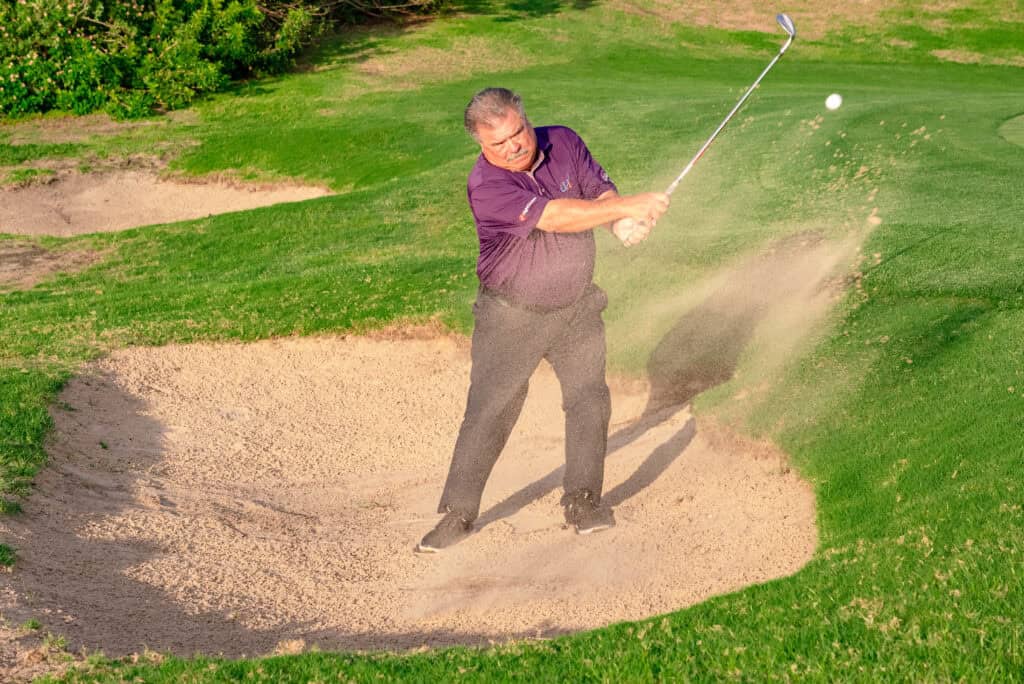
Shot: Explosion shot with lofted wedge.
Technique: Open the clubface, commit to accelerating through the sand, and aim to land the ball on a flat spot of the green to let it release.
Why It Matters: The third shot from the sand determines whether you walk away with par or limp off with a double. Practicing this shot builds trust in pressure moments.
Chip from the Fringe or Rough
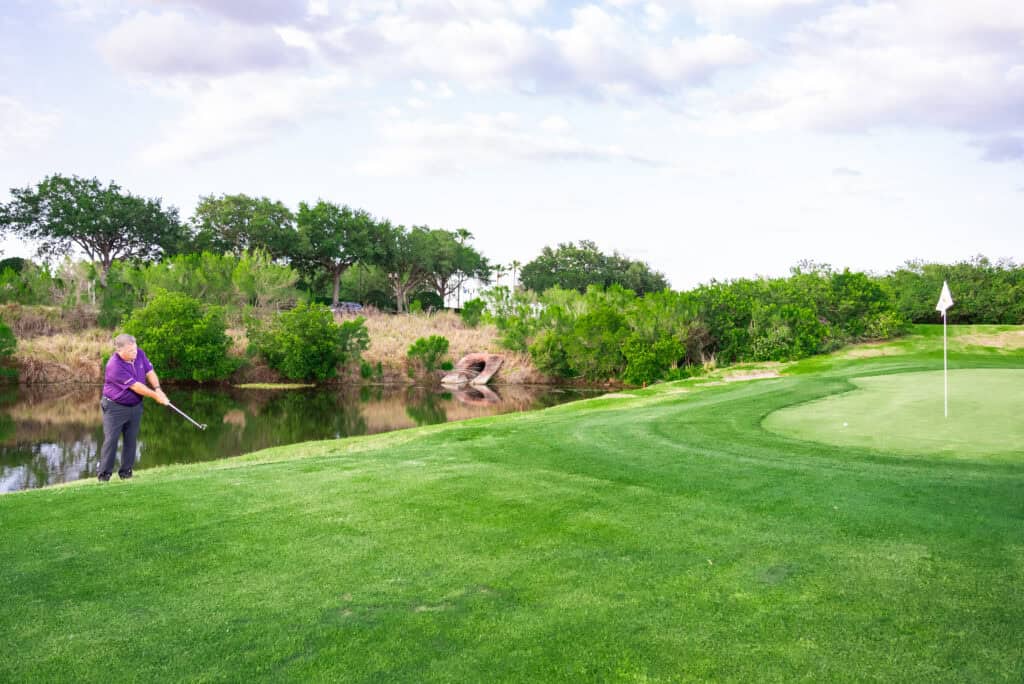
Scenario: You missed the green left; pin is tucked right.
Shot: Bump-and-run or soft chip.
Technique: Use a 9-iron for a bump-and-run or a wedge for a higher shot. Focus on reading the green like a putt—use your landing zone wisely.
Why It Matters: Get it close, tap in for par, move on. Miss this, and you’re putting uphill for bogey.
Long Putt or Texas Wedge from Off the Green
Scenario: You rolled your approach just off the green on the fairway cut.
Shot: Putt from the fringe (Texas wedge).
Technique: Treat it like a lag putt. Use a putting grip and stroke, but add just a little firmness. Prioritize speed over line.
Why It Matters: Minimizes risk. You’re not introducing the inconsistency of a wedge, and if done well, you’re left with a short tap-in.
Flop Shot to a Short-Sided Pin
Scenario: You missed the green short-side, and the pin is tucked just behind a bunker.
Shot: High flop with a lob wedge.
Technique: Open your stance and clubface, swing with speed and softness. The goal is height and minimal rollout.
Why It Matters: One of the toughest third shots. But when pulled off, it’s a huge momentum swing.
The Stats Don’t Lie
According to PGA Tour statistics:
- The average proximity to the hole from 30-60 yards is over 18 feet, meaning even pros struggle to stick it close.
- Up and Down percentage from the rough is only around 50%.
- Players who scramble well from 3rd shot situations gain strokes on the field over time.
In short: if you can master your third shots, you can lower your scores significantly, even without hitting more fairways or greens.
Positives and Negatives of the Third Shot on Par 4’s
No matter the shot, your third shot on par 4’s comes with positives and negatives. Being able to distinguish between the polar opposites and make the best choice for you, with each third shot on par 4’s you experience, could mean the difference between saving par and making a big number.
Positives
- Stroke Saver: Missed green? One good chip or pitch can turn bogey into par.
- Short Game Practice: Focus on these third shots and your short game improves dramatically.
- Mental Boost: Making a tough up-and-down builds confidence and resilience.
- Tactical Edge: Reading situations better and selecting the right third shot can outsmart your competitors.
Negatives
- High Pressure: A third shot after a mistake can be mentally challenging.
- Technical Demands: Requires touch, feel, and a variety of shots.
- Practice Time: To consistently hit great third shots, dedicated short game practice is a must.
- Easy to Overthink: Especially when you know you’ve made a mistake already.
Drills and Practice Tips
There are drills you can do in a “gamification” manner that will assist you with the skills you’ll need to succeed when faced with a third shot on par 4’s. As well as practicing under pressure, something important to include. Because all third shots come with some added pressure.
- The Ladder Drill (for pitch shots):
- Place targets at 10, 20, 30, 40, and 50 yards.
- Try to land 3 balls in each zone. Great for distance control.
- To Practice Under Pressure, place a scoring goal, with each shot worth so many points towards a point total. If you fail with any shot, there should be negative points subtracted from your score. You can’t stop practicing this drill until you reach your point total. How many tries did it take to do so? Each time you practice this drill; your new goal is to improve upon how many times it took the last time you practiced to achieve the point total.
- Par 4 Scramble Challenge:
- Play a round where every hole you start from 60 yards and try to get up and down.
- Score yourself like normal. It’s harder than it looks and teaches you real-game third-shot strategy.
- To practice this under pressure, for every over par result, you must repeat the hole from a different location executing a different shot until you score par or better.
- One-Ball Up-and-Down Drill:
- Toss a ball into random spots near the green and try to get up-and-down in 2 shots. Keep your score.
- To play this under pressure, play against a friend for a total amount of points, with each try being a hole, and each hole won being a point. First to the designated total wins something from the loser.
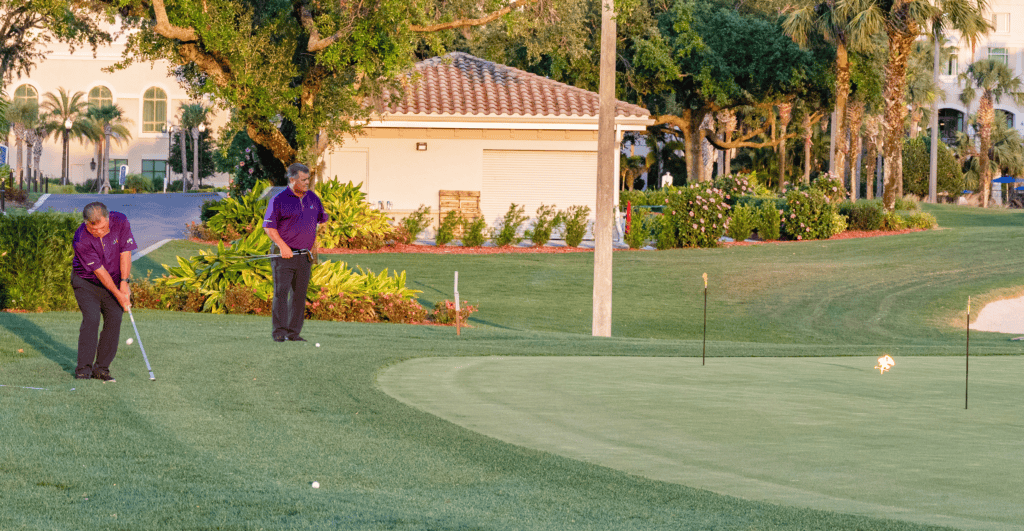
Conclusion
The third shot on par 4’s might not get the TV coverage or the crowd roars, but it’s the heart of your scoring game. Whether you’re in the rough, just off the green, or in a bunker, this is your chance to recover, reset, and rescue your score. Ignore it, and your scores will suffer. Master it, and you’ll start seeing consistent improvement in your game.
The next time you’re staring down a tricky pitch or bunker shot for your third, don’t see it as a failure. See it as your moment to shine. Allow John Hughes Golf to assist you with conquering your third shot on par 4’s. Schedule a golf school in Orlando with one of the best golf coaches in Florida by emailing or telephoning us.


